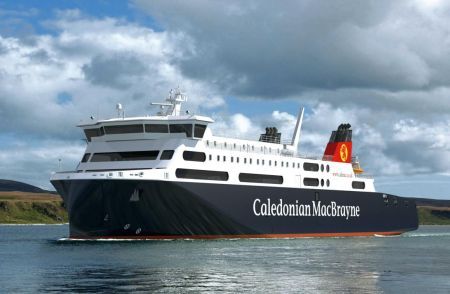
Wärtsilä, the marine industry’s leading solutions and services provider, has been selected to supply the main engines and auxiliary generating sets for a new Scottish owned ferry.
The RoPax vessel, meaning that it is designed for transporting both wheeled cargo and passengers, was ordered by Lloyds Banking Group and leased by Caledonian Maritime Assets, Ltd (CMAL), and it is being built at the Flensburger Schiffbau Gesellschaft shipyard in Germany. The contract was signed in December 2012, and is included in Wärtsilä’s 4th quarter 2012 order book.
The shipyard requirements were that the engines must be commercially competitive, compact and light in weight. Wärtsilä will deliver two 8-cylinder in line Wärtsilä 32 main engines and three 8-cylinder in line Wärtsilä 20 gensets. The total weight of this equipment will be only 151,4 tons which is the lowest in their class. The low engine weight contributes to the low overall weight of the vessel itself which is resulting in a relatively high payload the vessel is able to carry. Good fuel efficiency and low levels of emissions were also important considerations in the selection process. The new ferry must be capable of round-the-clock operation since it will replace two existing ferries on the route connecting the mainland of northwest Scotland with the Isle of Lewis in the Hebrides.
“CMAL is a progressive, forward-looking company focused on design optimisation for lowest emission, lowest fuel consumption and best vessel availability. This approach is a perfect match with Wärtsilä’s strategy. We have worked closely with both the owner and the yard earlier, and we have been privileged to work with them again on this project,” says Aaron Bresnahan, Vice President, Wärtsilä Ship Power Sales.
Andrew Duncan, Director of Vessels at Caledonian Maritime Assets Limited, commented: “We are pleased to announce that Wärtsilä main and auxiliary engines are to be installed on the new build ferry currently being designed at Flensburger Schiffbau Gesellschaft. The engines were selected as the most suitable for the project due to their overall performance in terms of fuel consumption, emissions, weight and size.”
The new vessel is designed to carry 700 passengers and 143 cars or 26 trucks. It is scheduled to go into service in 2014.
We use cookies to improve your experience. By continuing to use our site, you accept our Cookies, Privacy Policy,Terms and Conditions. Close X